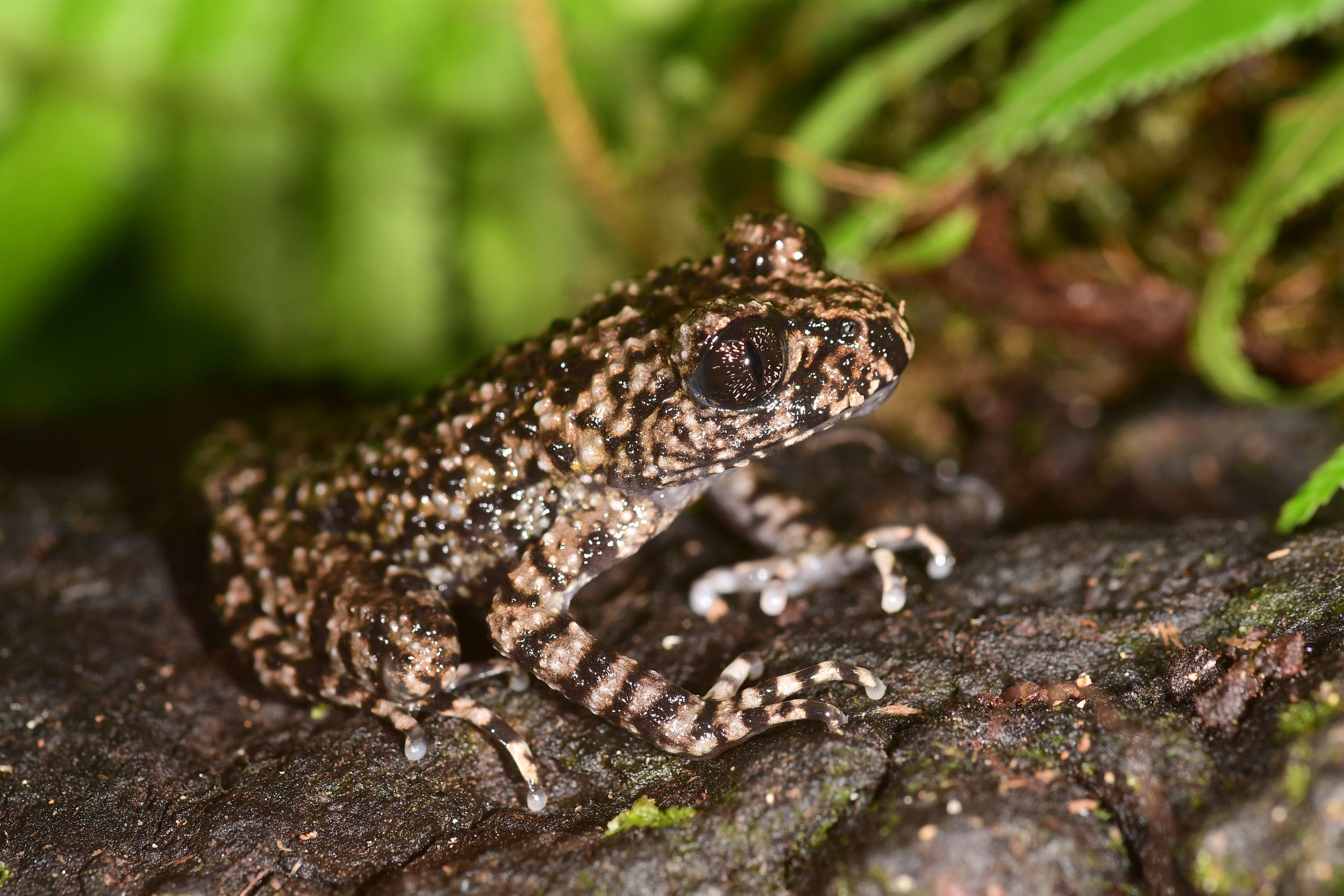New toothed toad found by scientists on the hunt for its ‘brother’
The toad has a row of tiny teeth on the roof of its mouth, known as vomerine teeth, as well as a narrow fold of skin behind its eyes.

A new toothed toad has been discovered in Vietnam by scientists on the hunt for its “brother”.
Researchers made the surprise discovery while on their way back from looking for a known toad in the region.
The amphibian has been named the Mount Po Ma Lung toothed toad (Oreolalax adelphos), after the mountain on which it was found – in Vietnam’s Hoang Lien mountain range, a known global hotspot for threatened species.
Based on the measurement of a single male and female, the newly discovered creatures are just 38mm in length for an adult male, and 46.2mm in length for an adult female.
This is a very exciting new discovery, and one that highlights the need to protect the forests of the Hoang Lien Range and their remarkable biodiversity
The toad has a row of tiny teeth on the roof of its mouth, known as vomerine teeth, as well as a narrow fold of skin behind its eyes, a distinct mottled pattern on its belly, and an eye-catching two-toned iris (coloured part of the eye).
Zoological Society of London (ZSL) fellow Luan Thanh Nguyen led the group expedition which involved a 12-hour hike during an eight-day survey of the mountain range.
The conservationists climbed Mount Po Ma Lung in search of the Sterling’s toothed toad, and on the way down from the 2,967-metre-high peak, they found the Mount Po Ma Lung toothed toad on a path well-trodden by tourists.
The animal had unfamiliar colour markings with black, cream and grey spots, leading the researchers to quickly believe it was new and undescribed.
Dr Ben Tapley, London Zoo’s curator of reptiles and amphibians and the paper’s co-author, said: “This is a very exciting new discovery, and one that highlights the need to protect the forests of the Hoang Lien Range and their remarkable biodiversity.
“Over the past 10 years, we have described six frogs and a snake as new species to science; now we have the important task of working with our partners to conserve them.”
The species is the second Oreolalax amphibian to be found in Vietnam – the first being the Sterling’s toothed toad – with both found on Mount Po Ma Lung.
The species name “adelphos”, meaning brother in Greek, acknowledges this link between the toothed toads.
This important discovery in our Hoang Lien Range amphibian research brings us one step closer to better knowledge of the true diversity of amphibians in Vietnam’s high mountain ranges
Mr Nguyen, of Indo-Myanmar Conservation, who is based in Vietnam, said: “The discovery of Oreolalax adelphos is a surprising finding and the result of a truly unforgettable day of searching, climbing to the mountain’s highest summit.
“Our initial goal on this trip was to find a Sterling’s toothed toad, but while surveying Mount Po Ma Lung under very challenging weather conditions, we came across what we’re thrilled to have uncovered a species that is new to science: the Mount Po Ma Lung toothed toad.
“This important discovery in our Hoang Lien Range amphibian research brings us one step closer to better knowledge of the true diversity of amphibians in Vietnam’s high mountain ranges.”
The Mount Po Ma Lung toothed toad’s forest habitat is under threat from destruction, driven by fuelwood collection for the tourism industry, as well as the creation of cardamom plantations on the lower slopes of the mountain.
Experts are still gathering information on whether the newly discovered species is highly threatened.
But it could rank as critically endangered on the IUCN Red List if further research confirms its reliance on this singular, small high-altitude home around the summit of Mount Po Ma Lung.
This new species is described in a study published in Zootaxa by an international team led by Mr Nguyen, and London Zoo’s amphibian team, experts from the Asian Turtle Programme of Indo-Myanmar Conservation, the Chengdu Institute of Biology, the Australian Museum and Australia’s Centre for Ecosystem Science.
Bookmark popover
Removed from bookmarks